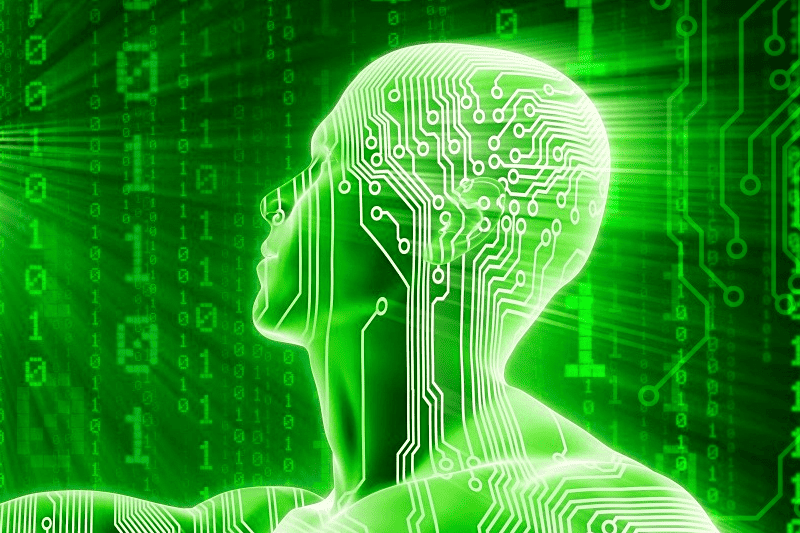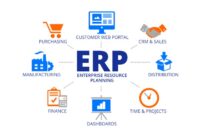Generative artificial intelligence (GenAI) is revolutionizing the future of work, making businesses more efficient and reducing burnout.
November’s DevOpenAI, OpenAI’s premier developer conference, became a bustling epicenter of AI innovation, with nearly two million developers attending, both online and offline. Most of them were eager to showcase innovative products created using GenAI. OpenAI’s breakthrough in this area is not just an evolution, it is a paradigm shift. Every dawn sees the birth of new revolutionary AI applications that promise to redefine the foundations of industries around the world.
The technological crescendo we are experiencing is not just rapid, it is excitingly exponential. Those businesses that embrace this whirlwind of AI innovation will be positioned to lead the next industrial revolution. However, those hesitant to cross the threshold may soon find themselves overwhelmed by the digital tide.
The professional landscape is not just evolving, it is being rebuilt before our eyes. With GenAI, yesterday’s seemingly impossible tasks—whether developing strategies for high-end consulting firms, analyzing markets using large amounts of data, or synthesizing complex patient records in healthcare—are transformed into today’s routine tasks.
Here are three best practices that leaders and managers at leading companies can use to improve operational efficiency and productivity and prevent employee burnout in high-intensity organizations.
1. Customized GenAI data-driven solutions: using internal data sets
High-performing organizations—whether they’re venture capital firms, consultancies, or leading technology companies—leverage the power of data they accumulate from peer projects or customer requests to achieve efficiency and excellence. These organizations maintain a variety of data sets, from benchmarking studies to individual project data, that are available in the cloud. As a result, when a new client or project comes along, they can easily tap into this cache of data.
The emergence of specialized AI solutions, especially those using GenAI, has revolutionized this process. Such tools not only make data easier to find, but also identify potential gaps, weaknesses and strengths of a particular aspect in existing data sets. A clear illustration of this is McKinsey’s GenAI tool Lilli. The app helps employees quickly navigate vast customer data sets, delivering relevant information and insights to new customers in minutes rather than hours. This significantly reduces the workload on employees, allowing them to focus more on building relationships with customers.
Similarly, Cambridgeshire and Peterborough NHS has built its own EHR data search engine using Azure Cognitive Search. The Trust uses this GenAI service internally when it needs to move from one data set to another.
Additionally, companies like Google (Duet AI), Salesforce (Einstein Bot), Zoom (Zoom AI Companion), Amazon (Q) and many others are also entering the race to develop their own GenAI applications to improve efficiency and productivity.
2. Adapted digital work platforms: increasing efficiency with GenAI
GenAI tools are quickly becoming a versatile addition to the company’s digital work platform. With an unparalleled ability to provide assistance in a variety of areas, they provide invaluable support to coders in streamlining coding processes, enabling legal departments to quickly access contract information, and providing HR departments with real-time employee progress reports. More broadly, integrating GenAI tools paves the way for end-to-end digital transformation that can significantly reduce workload and reduce stress at all levels of an organization. Pioneering this digital shift are early adopters of plugins such as ChatGPT Enterprise, which are specifically designed for enterprise use and demonstrate GenAI’s enormous business potential.
Incorporating automation into business processes is a long-standing practice, but the emergence of GenAI has expanded its capabilities. Unlike traditional automation, which relies on clear rules and guidelines, GenAI is a transformative tool that can develop new processes or improve existing ones by identifying patterns. A prime example of this is dynamic automation and workflow optimization. Here, GenAI can proactively identify potential bottlenecks or inefficiencies, suggesting solutions and adjustments in real time, significantly reducing employee fatigue from monotonous tasks.
3. AI-based solutions to reduce employee burnout in a busy corporate environment
In a fast-paced corporate environment, employee fatigue and burnout are becoming a growing problem. The solution may be to use GenAI on data from the Maslach Burnout Inventory (MBI), a tool that is effective in high-stress environments, such as in financial business, high-tech enterprises and venture capital companies. The MBI measures emotional exhaustion, depersonalization, and decreased personal fulfillment, making it adaptable to a variety of work-intensive scenarios. GenAI can analyze MBI data in real time and, based on MBI scores, instantly provide personalized feedback to both managers and employees, making recommendations ranging from break scheduling to workload adjustments and resources to improve mental well-being. However, it is critical to ensure that it is used ethically, especially with regard to confidentiality and misuse of MBI results.
In the fast-paced world of high-octane businesses, these tools are not only symbols of innovation, but also protect the well-being of employees by reducing their potentially tiring workload. GenAI improves decision-making by analyzing internal data sets, improves processes, intelligently manages tasks, and proactively identifies signs of fatigue and burnout, thereby protecting employees. As we enter this transformative era of generative AI, the message for CEOs and C-suite leaders is clear: harness the potential of GenAI while carefully balancing ethical responsibility with forward-thinking strategic insight.





